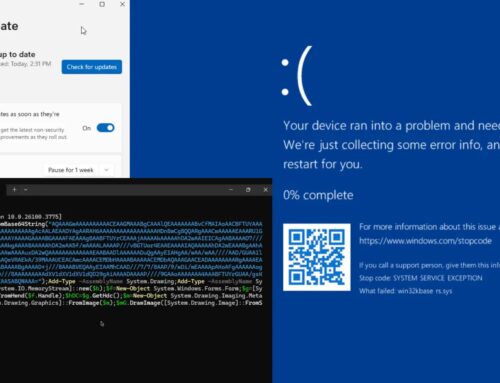
ArmouryLoader Bypassing System Security Protections and Inject Malicious Codes
In the evolving landscape of cyber threats, the emergence of sophisticated loaders capable of bypassing traditional security measures presents a significant challenge for organizations. One such threat, ArmouryLoader, has rapidly carved out its niche by exploiting trust and undermining endpoint security. This analysis delves into how ArmouryLoader operates, its impact, and crucial remediation strategies to protect your digital assets.
Understanding ArmouryLoader’s Genesis and Modus Operandi
ArmouryLoader first appeared on the threat landscape in late 2024, immediately distinguishing itself by hijacking the export table of ASUS’s Armoury Crate utility. This legitimate gaming companion, trusted by millions, was maliciously transformed into an initial entry point for sophisticated malware campaigns. The ingenuity of this attack lies in its ability to leverage a signed, trusted application, thereby eluding many standard security checks.
The core of ArmouryLoader’s operation involves discreetly slipping past endpoint telemetry. Once inside, it decrypts its payload, often without triggering alarms that would otherwise signal malicious activity. This stealth allows it to establish a foothold and inject malicious code, leading to further compromise of the system. The incident highlights a critical vulnerability in the supply chain of trusted software and the dangers of signed binaries being repurposed for nefarious ends.
The Impact: Bypassing System Security Protections
ArmouryLoader’s primary impact stems from its capacity to bypass an array of established system security protections. Traditional antivirus software, endpoint detection and response (EDR) solutions, and even some next-generation antivirus (NGAV) platforms struggle to identify its initial infiltration due to the legitimate nature of the compromised ASUS utility. This allows the loader to:
- Evade Signature-Based Detection: By leveraging a trusted application, ArmouryLoader avoids detection by signatures that might flag known malware.
- Circumvent Heuristic Analysis: Its subtle initial actions and the use of decryption for its payload can make it difficult for heuristic engines to identify its malicious intent during early stages.
- Bypass Behavioral Monitoring: The initial execution pathways leveraging Armoury Crate might appear benign, delaying or preventing behavioral monitoring systems from recognizing a threat.
- Inject Malicious Codes: Once established, ArmouryLoader injects arbitrary malicious code into the system, enabling a wide range of follow-on attacks, including data exfiltration, ransomware deployment, or establishing persistent access.
Remediation Actions and Proactive Defense Strategies
Effective defense against threats like ArmouryLoader requires a multi-layered approach, combining proactive measures with robust incident response capabilities. Here are key remediation actions and strategies for strengthening your cybersecurity posture:
- Software Supply Chain Vigilance: Exercise extreme caution with all software downloads, even from seemingly reputable sources. Verify the authenticity and integrity of application installers, especially those that interact with system-level functions.
- Application Whitelisting: Implement strict application whitelisting policies to prevent unauthorized executables from running. This can significantly mitigate the risk of unknown or suspicious loaders.
- Enhanced Endpoint Telemetry and Analysis: Deploy advanced EDR and XDR solutions capable of deep behavioral analysis and anomalous activity detection. Focus on solutions that can monitor process injection, privilege escalation, and suspicious inter-process communication, even from trusted applications.
- Regular Patch Management: Keep all operating systems, applications, and utilities (including gaming software like Armoury Crate) updated with the latest security patches. Developers frequently release updates to address newly discovered vulnerabilities. While no specific CVE has been publicly assigned to the initial ArmouryLoader compromise of Armoury Crate, general vulnerability management practices are crucial.
- Principle of Least Privilege (PoLP): Enforce PoLP across your organization, restricting user and application permissions to the absolute minimum required for their function. This limits the potential damage if a system is compromised.
- Network Segmentation: Segment your network to contain potential breaches. If ArmouryLoader gains a foothold, network segmentation can prevent it from spreading easily to other parts of your infrastructure.
- Threat Intelligence Integration: Stay updated with the latest threat intelligence on emerging loaders and attack techniques. Integrate this intelligence into your security operations to proactively identify and block new threats.
- User Awareness Training: Educate users about the dangers of downloading software from unofficial sources, verifying digital signatures, and reporting suspicious activity.
Tools for Detection and Mitigation
Implementing the right tools is paramount in detecting and mitigating advanced threats like ArmouryLoader. Below is a selection of tool categories and examples that can aid in your defense:
| Tool Category | Purpose | Examples/Key Features |
|---|---|---|
| Endpoint Detection & Response (EDR) / Extended Detection & Response (XDR) | Provides deep visibility into endpoint activity, detects suspicious behaviors, and enables automated responses. Critical for identifying subtle anomalies. | CrowdStrike Falcon Insight, Microsoft Defender for Endpoint, SentinelOne Singularity, Cynet 360. Look for capabilities like process monitoring, memory forensics, and behavioral analytics. |
| Application Whitelisting / Control | Prevents unauthorized applications from executing on endpoints. Highly effective against unknown executables. | Microsoft AppLocker, VMware Carbon Black App Control, Thycotic Application Control. Focus on ease of management and granular control. |
| Vulnerability Management Platforms | Identifies and helps prioritize software vulnerabilities across the IT environment, ensuring timely patching. | Tenable.io, Qualys VMDR, Rapid7 InsightVM. Important for identifying vulnerable software versions that could be exploited. |
| Security Information and Event Management (SIEM) | Aggregates and correlates security logs from various sources, providing a centralized view of security events and enabling threat detection. | Splunk Enterprise Security, IBM QRadar, Elastic Security. Key for identifying patterns indicative of compromise by analyzing logs from different systems. |
| Threat Intelligence Platforms (TIPs) | Provides curated and actionable threat intelligence, including indicators of compromise (IOCs) and attack techniques. | Mandiant Advantage, Recorded Future, Anomali. Leverage these for proactive defense, understanding new threats, and updating security rulesets. |
Conclusion
The emergence of ArmouryLoader serves as a stark reminder of the sophisticated and evolving nature of cyber threats. By weaponizing trusted software, adversaries can bypass conventional defenses and establish a foothold for deeper system compromise. For organizations, this necessitates a shift towards more proactive and adaptive cybersecurity strategies, focusing on deep behavioral analysis, stringent application controls, and continuous vigilance of the software supply chain. Remaining informed and implementing robust multi-layered defenses are no longer optional but essential for safeguarding against such insidious attacks.





